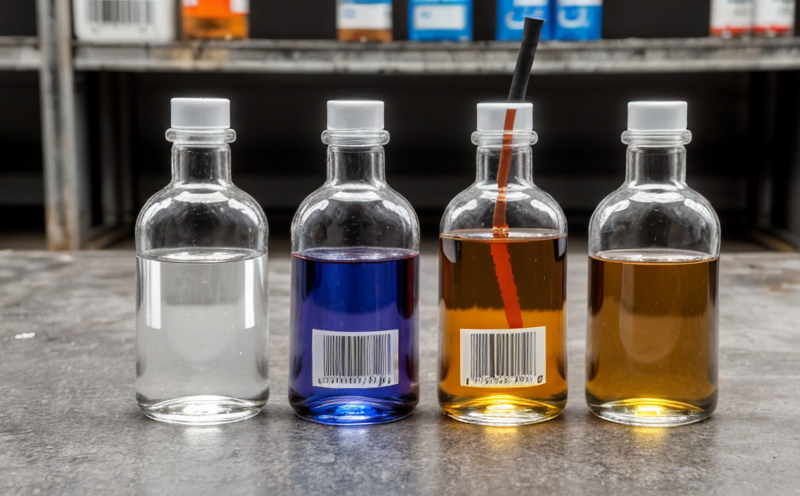ASTM D3895 Oxidative Stability Testing of Polyethylene
The ASTM D3895 oxidative stability test is a critical procedure used to evaluate the resistance of polyethylene (PE) materials to oxidative degradation. This testing method helps ensure that PE products maintain their structural integrity and performance over time, especially in environments where exposure to oxygen may lead to accelerated aging.
Polyethylene, commonly used in packaging, films, pipes, and other industrial applications, is susceptible to oxidative reactions. These reactions can compromise the mechanical properties of the material, leading to potential failure during use. By conducting oxidative stability tests according to ASTM D3895, manufacturers and quality managers can predict and mitigate these risks.
The test involves exposing a sample of polyethylene to controlled conditions that mimic real-world exposure to oxygen, heat, and light. The primary goal is to observe the rate at which the material undergoes oxidative degradation and determine if it remains stable over time. This information is invaluable for product development, quality assurance, and compliance with international standards.
The test procedure typically involves exposing a PE sample to an atmosphere of oxygen and nitrogen at elevated temperatures for a specified period. The sample's weight loss or increase in color intensity due to oxidation is measured periodically. The results provide insight into the material’s oxidative stability, helping to optimize formulations and processing techniques.
This testing method is particularly important for polyethylene products intended for long-term outdoor use, such as plastic pipes, automotive components, or medical devices. In these applications, maintaining the integrity of the material over extended periods is critical to product performance and safety.
Understanding the oxidative stability of PE materials allows manufacturers to make informed decisions about their production processes, raw material choices, and end-product design. By optimizing these factors, they can enhance the longevity and reliability of their products while also ensuring compliance with relevant international standards like ASTM D3895.
Why It Matters
The oxidative stability testing of polyethylene is essential for several reasons:
Enhanced Product Lifespan: By ensuring that PE materials are stable over time, manufacturers can extend the useful life of their products.
Better Compliance with Standards: Adhering to ASTM D3895 helps ensure compliance with international standards and regulatory requirements.
Improved Product Reliability: Stable materials are less likely to fail in service, reducing the risk of product recalls and customer dissatisfaction.
Optimized Formulations: Testing helps identify optimal raw material compositions that enhance oxidative stability.
In summary, oxidative stability testing is a vital tool for ensuring that polyethylene products perform reliably over their intended lifespans. It supports quality assurance efforts and contributes to the overall success of product development projects.
Scope and Methodology
The scope of ASTM D3895 oxidative stability testing is focused on evaluating the resistance of polyethylene materials to oxidative degradation. The test is particularly useful for assessing long-term performance in environments where exposure to oxygen may lead to accelerated aging.
The methodology involves exposing a sample of PE to controlled conditions that mimic real-world exposure to oxygen, heat, and light. The primary goal is to observe the rate at which the material undergoes oxidative degradation and determine if it remains stable over time. This information is invaluable for product development, quality assurance, and compliance with international standards.
The test typically involves exposing a PE sample to an atmosphere of oxygen and nitrogen at elevated temperatures for a specified period. The sample's weight loss or increase in color intensity due to oxidation is measured periodically. The results provide insight into the material’s oxidative stability, helping to optimize formulations and processing techniques.
For accurate testing, it is crucial to follow ASTM D3895 precisely. This includes selecting appropriate test conditions such as temperature, humidity, and exposure time. The test should be conducted using high-quality materials and equipment to ensure reliable results.
Industry Applications
Packaging: Ensuring the longevity of packaging materials, especially those used in food and beverage applications.
Films and Sheets: Evaluating the stability of films and sheets for use in a variety of industries.
Pipes: Assessing the durability of plastic pipes in outdoor environments.
Automotive Components: Testing materials used in automotive applications to ensure reliability over time.
Medical Devices: Ensuring the stability and safety of medical devices that may be exposed to oxygen.
The results from ASTM D3895 testing are crucial for industries where long-term product performance is essential, such as packaging, automotive manufacturing, and medical device production. By understanding the oxidative stability of PE materials, manufacturers can make informed decisions about their production processes and raw material choices.





